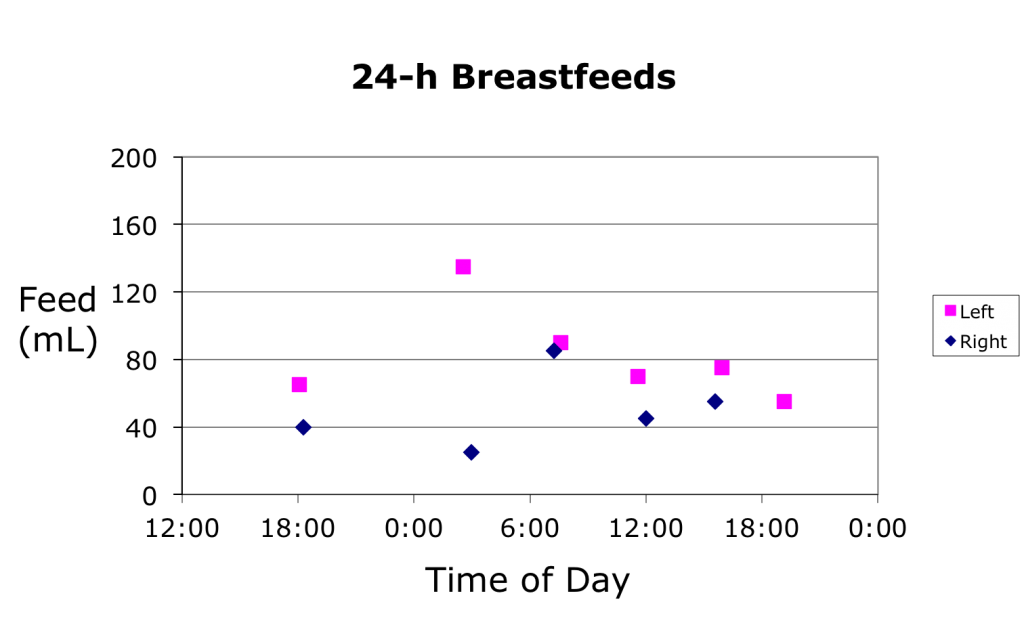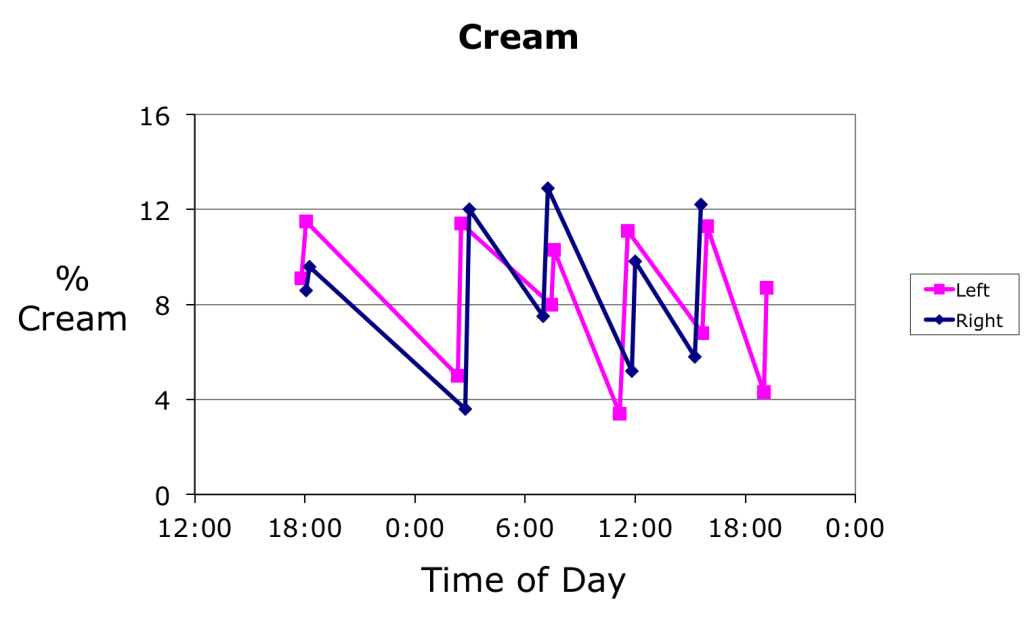About foremilk and hindmilk
These terms were originally used in research
Researchers collect a small (~1mL) sample of breastmilk before and after breastfeed/express. The samples are then spun in a centrifuge and the fat content of the sample is measured. The samples and volume of the feed are then used to work out the storage capacity of the woman’s breast. The breast storage capacity is then used to measure the degree of breast emptying that has occurred from a feed or express. We have better breastfeeding knowledge and pumps because of these research tools.
Researchers now use the term “before” and “after” feed samples, why?
Because there is now so much misinformation talked about foremilk and hindmilk in the general community.
Let’s look at the 2 graphs below


The top graph shows time and volume of breastfeeds in 24 hours. The graph below shows the corresponding % of cream (fat) before (foremilk) the feed then after (hindmilk) the feed. As you can see the fat content is always lower at the beginning and higher at the end of a feed.
When you hear
- “stay feeding off one breast so your baby gets the hindmilk”
- “your baby is getting too much foremilk”
- “make sure you feed for 20 minutes each breast to ensure your baby gets the hindmilk”
These comments are not valid
As you can see from the graphs above some foremilk samples are higher fat content than some hindmilk samples. The feeds vary throughout the day and from woman to woman.
Your breasts make milk just right for your baby
Every individual breastfeeding pair is unique. Ring to discuss your breastfeeding relationship



